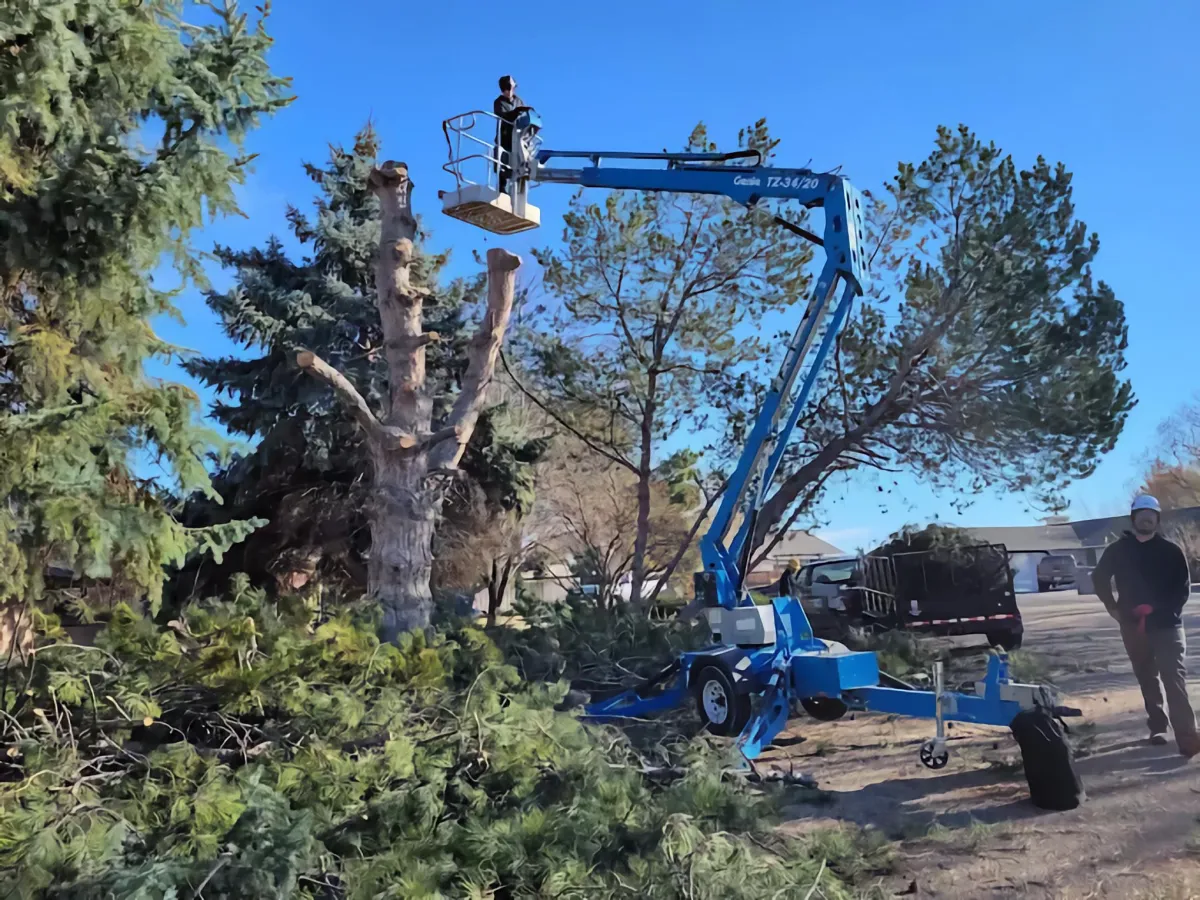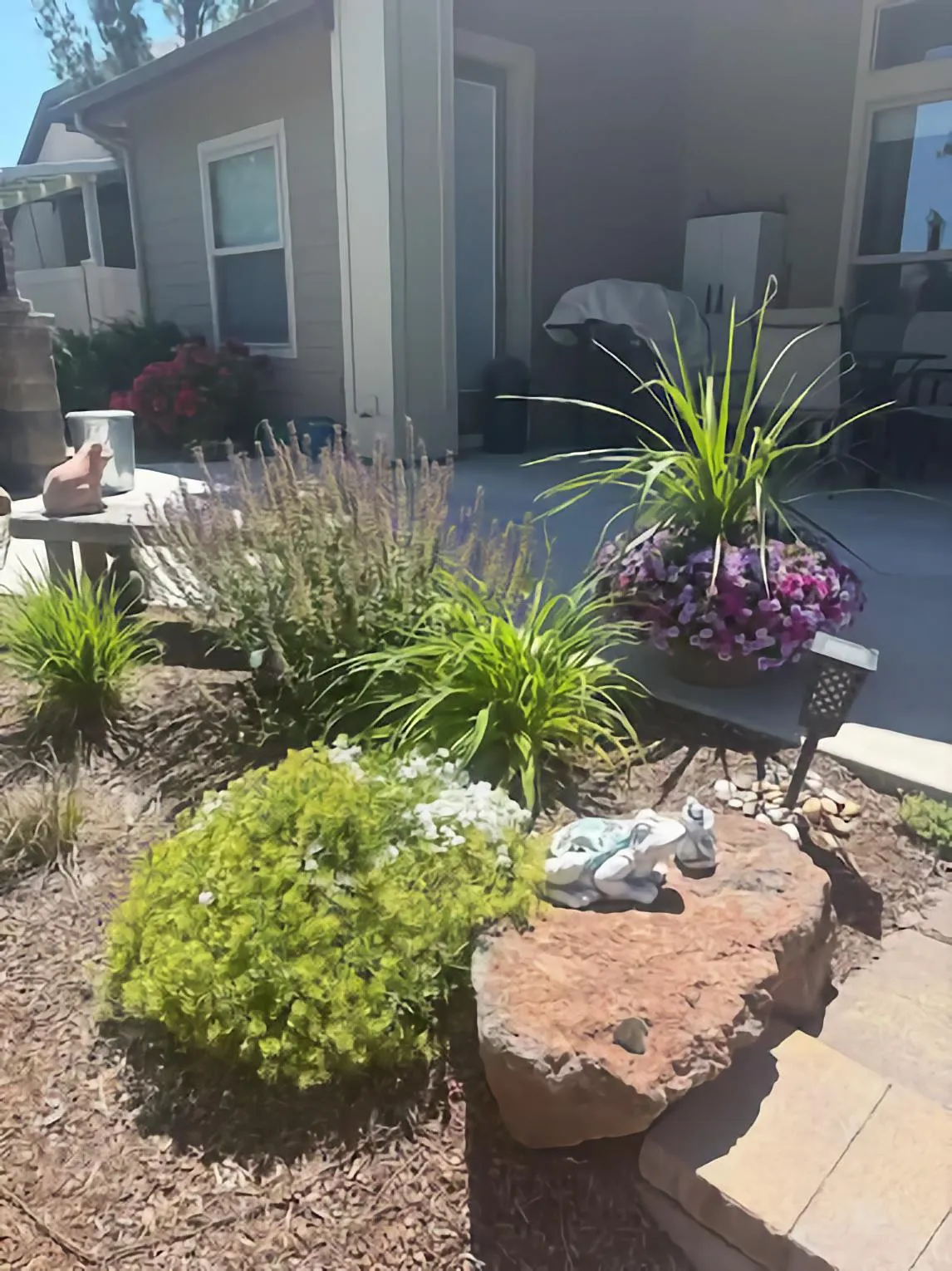
Tree Landscaping Boise
Strategic Tree Placement & Design
Long-Term Canopy Development
Integrated Landscape Solutions

Professional Tree and
Landscaping Services
in the Boise Area
Professional Tree and Landscaping Services in the Boise Area
Expert Tree Care
Tree & Plant Removal
Water-Saving Xeriscape
Landscaping Solutions
Professional Tree and
Landscaping Services
in the Boise Area
Professional Tree Landscaping Service in Boise, Idaho
As a certified landscape professional with over 18 years of experience serving the Boise metro area, I've discovered that most homeowners completely underestimate the transformative power of strategic tree placement in landscape design. Last summer, I worked with a family in Garden City whose new construction home sat on a barren lot that baked in the afternoon sun, making their backyard unusable during peak outdoor season. Their contractor had suggested "adding some trees later," but they were struggling with where to place them and what species would provide the shade, privacy, and beauty they desperately needed.
After developing a comprehensive tree landscaping plan that considered mature canopy sizes, seasonal sun patterns, and long-term property enhancement goals, their outdoor space evolved from stark desert to comfortable outdoor living area within just two growing seasons. At Idaho Outdoor Solutions, we understand that trees aren't just landscape accessories – they're the architectural framework that defines outdoor spaces, creates microclimates, and provides decades of increasing value and beauty when positioned strategically.

Creating Landscape Architecture Through Strategic Tree Placement
Tree landscaping in the Treasure Valley requires thinking beyond immediate visual impact to envision how tree placement will affect property functionality, energy efficiency, and aesthetic appeal over 20-30 year time horizons. Unlike other landscape elements that can be easily relocated, trees represent permanent landscape investments that influence every other aspect of outdoor space design and performance.
Successful tree landscaping begins with understanding mature tree characteristics, growth patterns, and environmental impacts that vary dramatically between species and site conditions. A honey locust planted in the right location can provide filtered shade that cools outdoor living spaces while allowing winter sun penetration, while the same tree in the wrong location might block desired views or interfere with roof-mounted solar panels decades later.
The integration of trees with other landscape elements requires careful consideration of root systems, canopy development, and seasonal changes that affect irrigation needs, understory planting opportunities, and hardscape placement. Professional tree landscaping creates cohesive designs where trees enhance rather than complicate other landscape investments.
Strategic tree placement also addresses property challenges like wind exposure, noise reduction, and privacy screening while supporting wildlife habitat and environmental sustainability goals. When existing trees create problems rather than benefits, tree removal services can eliminate inappropriate specimens to create opportunities for better tree landscaping solutions.

Maximizing Property Value Through Professional Tree Selection
Tree landscaping decisions significantly impact property values, energy costs, and long-term maintenance requirements, making professional planning essential for maximizing landscape investment returns. Well-positioned trees can reduce cooling costs by 15-25% while poorly placed trees can create expensive maintenance problems and reduce property appeal.
Species selection for tree landscaping must balance immediate needs with long-term performance in Idaho's challenging climate conditions. Fast-growing species provide quick results but may create structural problems or excessive maintenance as they mature, while slower-growing quality species require patience but deliver superior long-term value and lower lifetime costs.
The timing of tree landscaping implementation affects establishment success and integration with other landscape improvements. Coordinating tree installation with irrigation systems, hardscape projects, and other plantings ensures efficient project completion and optimal results for all landscape elements.
Privacy and screening applications require understanding mature tree forms, seasonal characteristics, and growth rates that determine effectiveness over time. Evergreen trees provide year-round screening but may create overly dense conditions, while deciduous trees offer seasonal variation but temporary winter exposure.
Many tree landscaping projects incorporate landscape design principles that integrate trees with overall property enhancement goals for comprehensive outdoor environment improvement.

OUR PROCESS:
Our Comprehensive Tree Landscaping Development System
Effective tree landscaping combines horticultural expertise with landscape architecture principles to create tree placement strategies that enhance property functionality while supporting long-term landscape goals and environmental sustainability.
1. Site Analysis and Long-Term Vision Development
We conduct thorough evaluation of existing conditions, property goals, and environmental factors that influence tree performance while developing placement strategies that consider mature tree impacts on structures, utilities, and landscape functionality over decades of growth.
2. Species Selection and Placement Planning
Our tree landscaping process integrates appropriate species selection with strategic placement that maximizes benefits while minimizing conflicts with existing and planned landscape elements, ensuring trees enhance rather than complicate property functionality.
3. Installation Coordination and Establishment Management
Every tree landscaping project includes professional installation techniques, establishment support, and long-term care planning that ensures trees develop according to design intent while providing expected benefits throughout their lifespans.
Don't Wait - Let Us Help You Today!

Tree Landscaping Safety and Quality Standards
The Best in Tree AND Landscaping Services
Professional tree landscaping involves long-term liability considerations and quality control measures that ensure trees provide intended benefits while maintaining safety and environmental stewardship throughout their development and maturity phases.
Our tree landscaping projects follow established design principles and installation standards that promote healthy tree development while preventing future conflicts with structures, utilities, and other landscape investments.
Quality tree landscaping requires extensive knowledge of tree biology, landscape design principles, and local growing conditions that affect tree performance and integration with other landscape elements over extended time periods.
Why Choose Idaho Outdoor Solutions for Tree Landscaping
Long-Term Landscape Vision and Planning
Our tree landscaping expertise considers mature tree impacts and integration opportunities that maximize property enhancement while preventing future conflicts and maintenance problems.
Climate-Appropriate Species Expertise
We specialize in selecting tree species proven successful in Idaho conditions while matching specific varieties to intended landscape functions and site characteristics for optimal long-term performance.
Integrated Landscape Development
Our tree landscaping services coordinate with yard landscaping projects and comprehensive property improvements to create cohesive outdoor environments that enhance overall landscape functionality and appeal.
Professional Installation and Establishment Support
We provide expert tree installation techniques and establishment care that ensures trees develop according to design plans while providing expected landscape benefits and property enhancement.
Tree landscaping projects often benefit from lawn landscaping integration that creates seamless transitions between tree canopy areas and open lawn spaces for comprehensive outdoor environment development.

Tree Services
Comprehensive tree care solutions for every situation, from routine maintenance to emergency removal.
🌳 Tree Removal
✂️ Tree Trimming & Pruning
🪓 Tree Stump Removal
⚙️ Tree Stump Grinding
🔧 Tree Cabling & Bracing
🌱 Tree Planting
🚛 Tree Transplanting
🔬 Tree Health Diagnosis
Whether you're dealing with a dangerous tree threatening your home in Eagle or need expert pruning for mature trees in Meridian, we provide the skilled tree care that keeps your property safe and beautiful.
Landscaping Services
Creating beautiful, sustainable outdoor spaces that thrive in Idaho's high desert climate.
🎨 Landscape Design
🏗️ Landscape Installation
🌿 Lawn Care
🏡 Lawn Landscaping
🌳 Tree Landscaping
🏠 Yard Landscaping
🌵 Xeriscape Installation
From water-wise xeriscaping perfect for our climate to traditional lawn installations, we create outdoor spaces that enhance your property value while respecting our local environment and water resources.
Emergency & Debris Services
24/7 emergency response and comprehensive cleanup services for storm damage and hazardous situations.
🚨 24-Hour Emergency Tree Service
⛈️ Emergency Storm Damage Cleanup
🧹 Yard Debris Removal
🔥 Fire Mitigation Services
🛡️ Hazardous Tree Assessment
When Boise's unpredictable weather strikes, we're ready with emergency equipment and experienced crews to handle dangerous situations and restore your property quickly and safely.
F.A.Q
Frequently Asked Questions About Tree Landscaping
How do I choose the right trees for my Boise property?
Tree selection depends on intended functions, site conditions, and long-term goals. We consider mature size, growth rate, seasonal characteristics, and environmental requirements to recommend species that will thrive and provide desired benefits.
What spacing is required between trees and structures?
Spacing requirements vary by mature tree size and species characteristics. Generally, small trees need 10-15 feet, medium trees 20-25 feet, and large trees 30+ feet from structures to prevent future conflicts.
When is the best time for tree landscaping installation?
Spring (April-May) and fall (September-October) provide optimal planting conditions for most species. Fall planting often provides better establishment results as trees develop root systems during cool weather before summer stress.
How long does it take for landscape trees to provide benefits?
Visible benefits typically appear within 2-3 years, with significant shade and screening effects developing within 5-7 years. Energy savings and property value impacts increase substantially as trees reach maturity over 10-15 years.
Can tree landscaping help reduce energy costs?
Yes, strategically placed shade trees can reduce cooling costs by 15-25% while windbreak trees can reduce heating costs by 10-15%. Proper placement and species selection are critical for maximizing energy benefits.
How much does professional tree landscaping cost?
Tree landscaping costs vary based on tree size, species selection, and site preparation requirements.
Do you provide guarantees on landscape trees?
We offer establishment guarantees on trees we install when clients follow recommended care protocols. Guarantee terms vary based on species selection, installation timing, and site conditions.
Ready to Create Your Landscape Vision?
Don't leave your property's tree placement to chance. Professional tree landscaping creates beautiful, functional outdoor spaces that enhance your property for decades to come.
Boise Tree Landscaping Service Area
From our location at 7307 W Swift Lane in Boise, we provide professional tree landscaping services throughout the greater Boise metro area. We serve customers in Boise, Eagle, Garden City, Meridian, Nampa, and surrounding communities who need expert tree placement and landscape integration for Idaho's challenging conditions.
Whether you're planning comprehensive landscape development for new construction in the Boise Foothills, need strategic tree placement for established properties in Eagle, or require professional tree landscaping for challenging sites in Meridian, our certified landscape professionals provide innovative solutions throughout Ada County and Canyon County.

Transforming Outdoor Spaces, One Yard at a Time.
Quick Links
Home
About Us
Services
Useful Links
Testimonials
FAQ's
Blog
